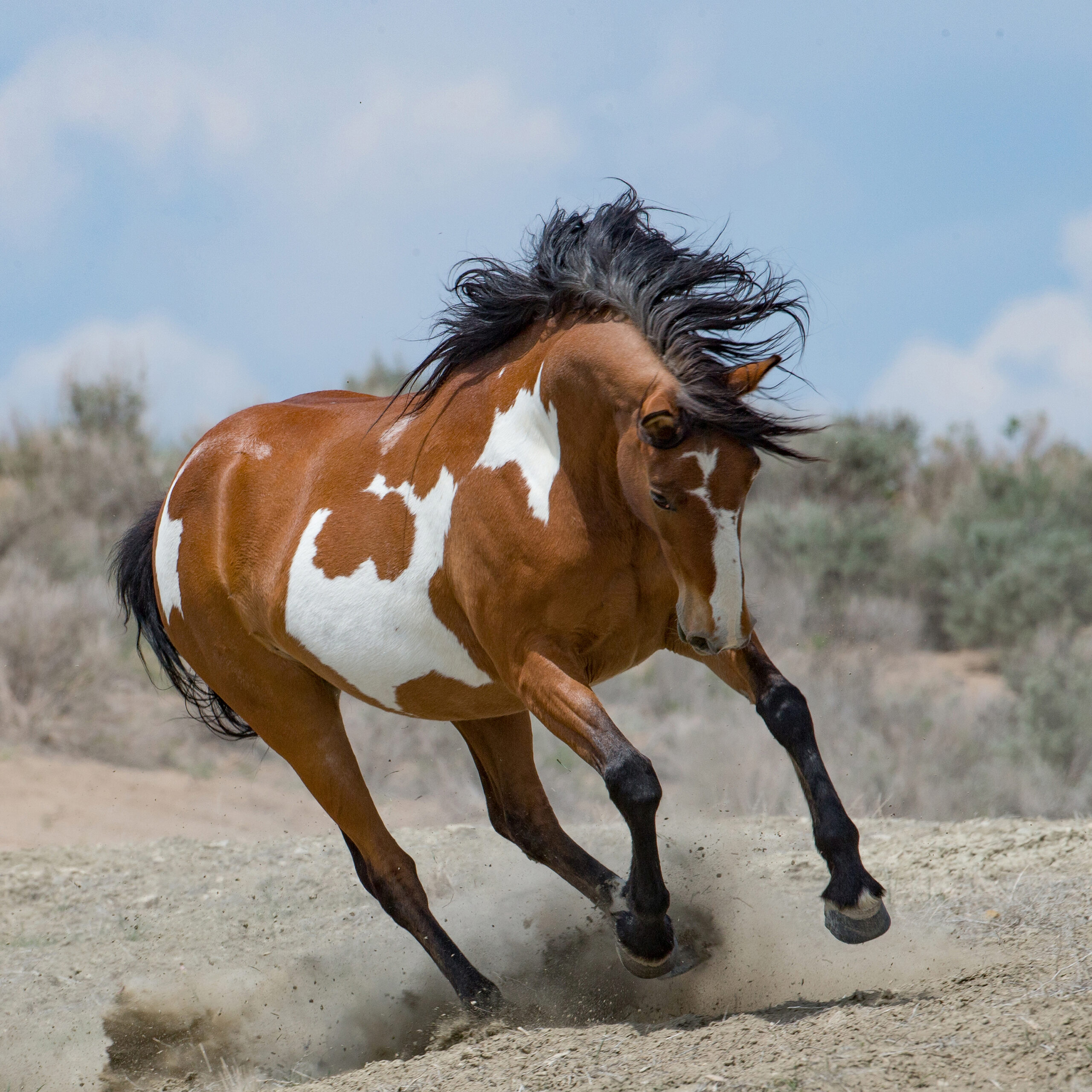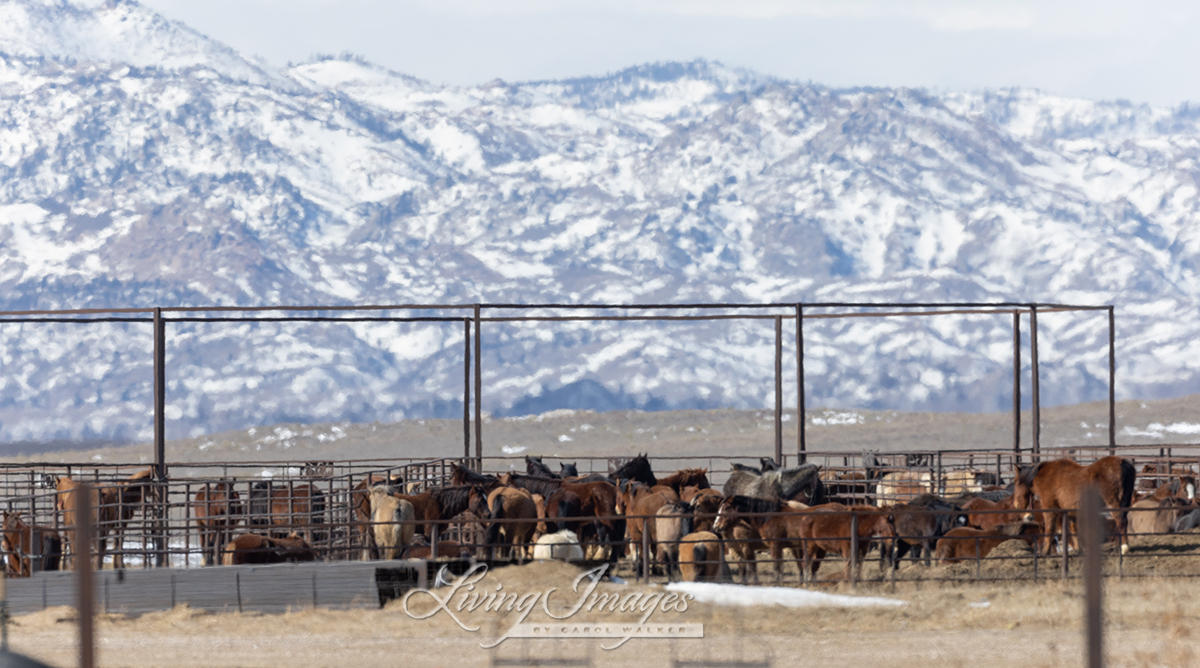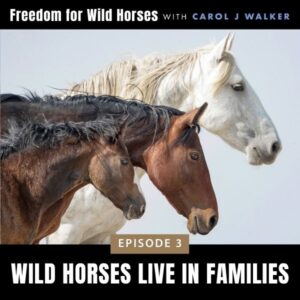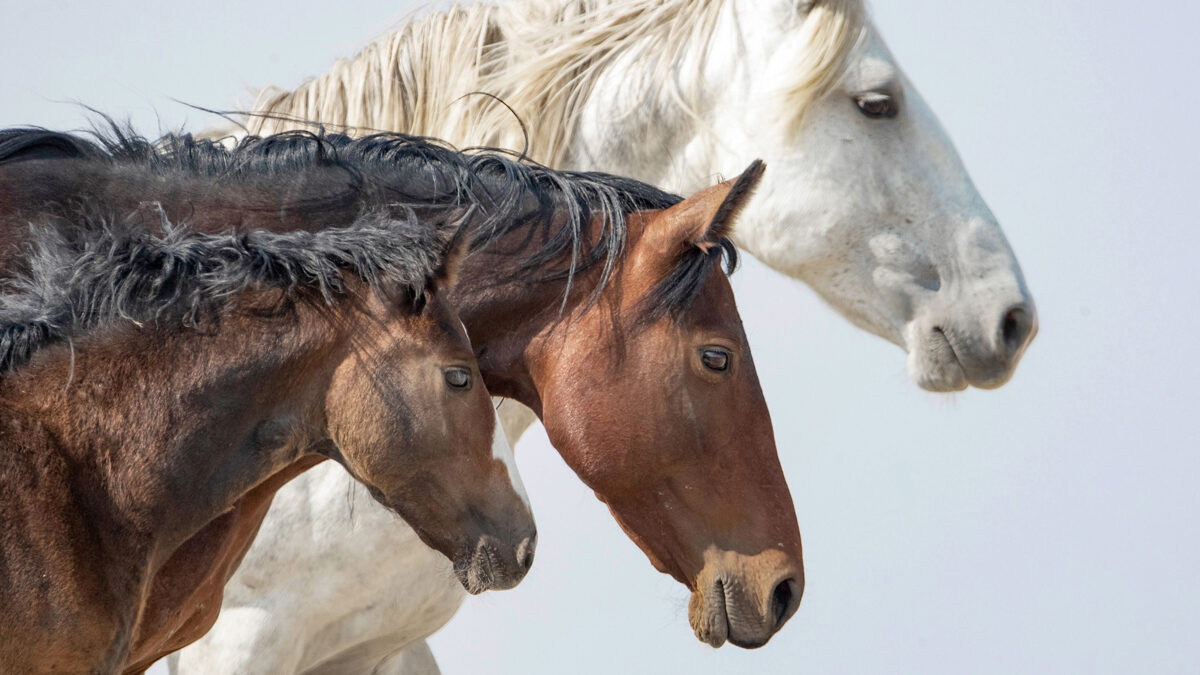
Ep #2: Wild Horses at Risk of Extinction
March 6, 2023
Wild Horses at BLM Corrals in Wheatland WY Finally Offered for Adoption
March 9, 2023
The most unique band of horses I’ve ever observed was in Adobe Town, Wyoming. I saw from a distance three dappled grays moving together. As I approached, I saw that all three were mares. They looked as though they were related. The oldest mare was “snaking” and moving her daughters, just like a stallion. Her coat was even scarred with bites, just like a stallion. I watched in fascination as they moved on by me. I’ve never before, or since, seen a family of just mares.
Many people think a stallion is in charge of a band and calls all the shots, but the truth is, it depends. If the mares do not like a stallion, they will not stay with him. They will make life as difficult as possible for him until he gives up, or until another stallion they prefer comes along. Often, it’s experienced mares that lead the band to water, shelter, and food, while the stallion usually brings up the rear. He is looking out for danger, and will even go back for a foal if the band is on the move and the foal is sleeping.
Wild horse families aren’t static. Every time I go out, I see changes in different families. But it doesn’t mean that families aren’t important or that they don’t give continuity to the wild horse society. We can learn so much by observing and studying their behavior and societal structure. Listen in this week to find out why families are the heart of wild horse society and why these families deserve to live their entire lives free on our public lands.
To celebrate the launch of this show, I’m giving away a 12”x18” metal print of Blue Zeus called Into the Blue, and two signed copies of my book, Blue Zeus: Legend of the Red Desert, to three lucky listeners who follow, rate, and review the show. Click here to learn more about the contest and how to enter, I’ll be announcing the winners in a future episode.
What You’ll Learn from this Episode:
- How domesticated horses and wild horses differ.
- What a wild horse family is and how they live together on public lands.
- How roundups are changing wild horse families.
- What the behavior of “snaking” is and how it works.
- How “Bachelor” bands are formed and their antics.
- How the BLM justifies the separation of bands.
- Why families are the heart of wild horse society.
Listen to the Full Episode:
Featured on the Show:
- To celebrate the launch of this show, I’m giving away a 12”x18” metal print of Blue Zeus called Into the Blue, and two signed copies of my book, Blue Zeus: Legend of the Red Desert, to three lucky listeners who follow, rate, and review the show. Click here to learn more about the contest and how to enter, I’ll be announcing the winners in a future episode.
- Living Images by Carol Walker
- Wild Hoofbeats Blog
- Wild Hoofbeats: America’s Vanishing Wild Horses by Carol Walker
Enjoy the Show?
- Don’t miss an episode, follow the podcast on Apple Podcasts, Spotify, Stitcher, or RSS.
- Leave us a review in Apple Podcasts.


1 Comment
Carol thank you so much for sharing your expertise on Wild Horses. I thought as if I was there with you watching these beautiful gifts God has given us.and of course man has to put his hand in there and destroy such wonderful creatures. Why can not man observe and respect such gifts instead of destroying them. The blm, helicopters break my heart as they will not listen. All of Gods creatures suffer this fate.Until humans learn to respect and honor all living creatures,this world is theirs as much as humans they are doomed. thank you for allowing me to be part of your dream. Stay safe and Happy Vicki Daye